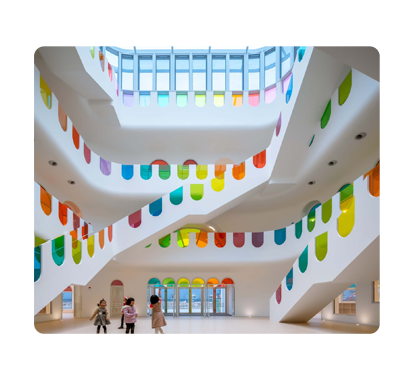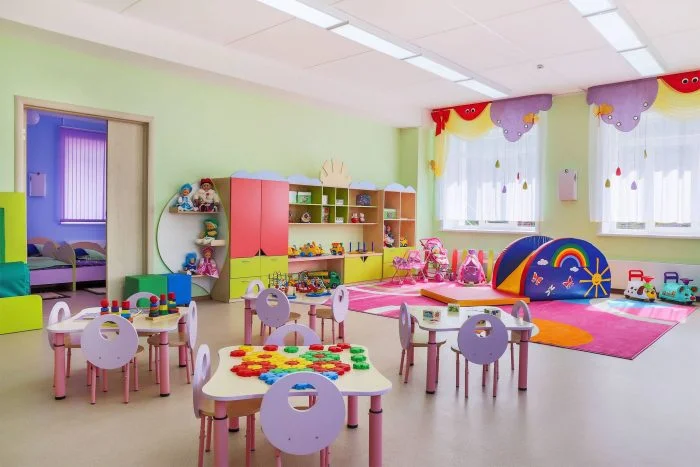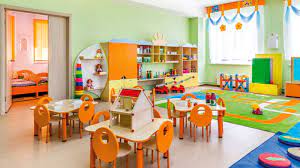A feasibility study for a daycare project is a crucial step to ensure its success and meet the needs of families seeking a safe and ideal educational environment for their children. The study begins with an analysis of the local market to assess the demand for daycare services, especially with the increasing number of working families, helping to identify viable opportunities in the sector. The study also focuses on choosing a strategic location that is easily accessible, providing a spacious area where children can play and learn comfortably and safely. Additionally, the study addresses the development of modern educational curricula that are suitable for the developmental stages of children and contribute to enhancing their social and cognitive skills. From a financial perspective, the study estimates the costs required to establish the daycare, including equipping facilities that ensure a safe and comfortable environment for the children. The focus is also on attracting a qualified staff of caregivers and supervisors to ensure high-quality care and education. Furthermore, the study includes an effective marketing plan targeting parents by offering innovative educational and recreational programs that meet the children’s needs.

The childcare center project is considered one of the most important initiatives that meet the needs of working families, as it provides a safe and stimulating environment that contributes to the development of children’s skills during their early years. The significance of this project lies in offering integrated care and educational services aimed at enhancing children’s social, cognitive, and physical abilities—making the nursery a comprehensive educational environment.
Additionally, the project helps alleviate the burden on parents by offering flexible daily programs that align with their work schedules. The nursery provides a wide range of services, including daily care, modern educational curricula based on interaction and play, and recreational activities that foster creativity. It also offers supervised healthy meals and psychological and social support programs to ensure that children grow up in a safe and stable environment.
To ensure the project’s success, conducting a feasibility study is a necessary step to determine operational costs, estimate expected returns, and establish effective strategies for the project’s long-term sustainability.



Executive summary
Study project services/products
Market Size Analysis
Risk Assessment
Technical study
Financial study
Organizational and administrative study

The Education Sector in GCC Countries
Because “Mashroo3k” Economic Consulting and Market Research Company believes in the importance of the education sector and its role in localizing national labor, it presents below the key indicators of the educational sector in GCC countries, thereby encouraging investment in this vital sector:
The total number of students in the Early Childhood Development stage (including nurseries and kindergartens) in GCC countries, according to the latest available statistics, reached 851.5 thousand students.
The number of school education students in the GCC was estimated at 9.3 million students (79.4% in the public sector and 20.6% in the private sector).
The number of adult education center learners was estimated at 181,247 students.
The number of higher education students was 2,206,446 students.
The number of early childhood education teachers was 50,647 teachers.
The number of school education teachers was estimated at 727,904 teachers.
There are 5,806 educational institutions operating at the early childhood stage.
There are 32,310 educational institutions operating at the school education stage.
Over the past years, governments in GCC countries have sought to bridge the gap between education and the labor market. They have adopted curricula that increase the share of vocational and technical education and encourage learning through modern media and technologies. It is also worth noting the increase in government spending by these six countries on education and its quality to graduate generations that meet the private sector’s labor needs.
According to the latest statistics:
Saudi Arabia spends 18.9% of its budget on education.
The UAE spends 14.8%.
Oman spends 12.2%.
Bahrain spends 9.8%.
Kuwait spends 12.3%.
Qatar spends 10.5% of its budget on education.
By the year 2023, the value of the private education market in GCC countries is expected to reach $26.2 billion.
The Global Education Sector:
The size of the global educational services market reached approximately $2,882.52 billion by the end of 2021, and global experts expect it to reach $3,191.79 billion by the end of 2022 — achieving a compound annual growth rate (CAGR) of 10.7%.
By 2026, the market value is projected to increase to $4,623.90 billion, achieving a CAGR of 9.7% over the forecast period.

By 2030, the global value of education as an industry is expected to reach $10 trillion USD.
By 2024, the global online education market is projected to reach $247.46 billion USD.
The AI-powered education market is expected to expand at a compound annual growth rate (CAGR) of 36% from 2022 to 2030.
In the year 2000, the number of pupils worldwide was approximately 657 million, and this number increased to 739 million by 2019.
In 2000, the number of secondary education students was around 452 million, rising to 601 million by 2019.